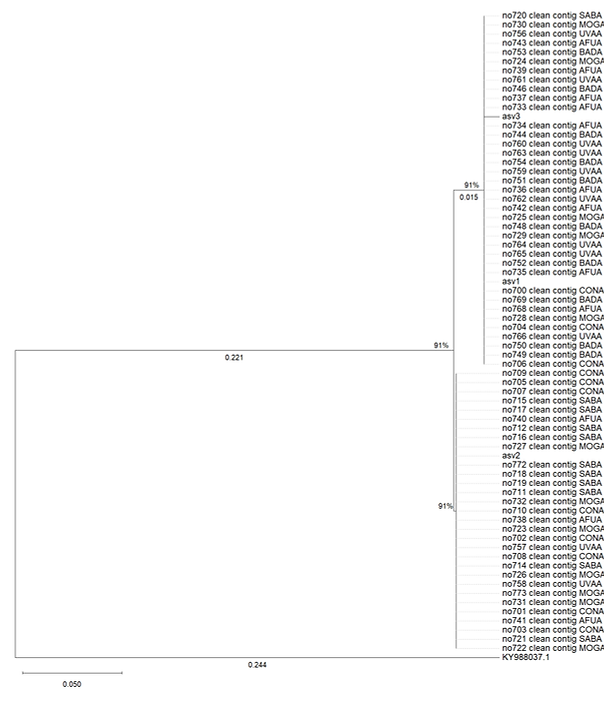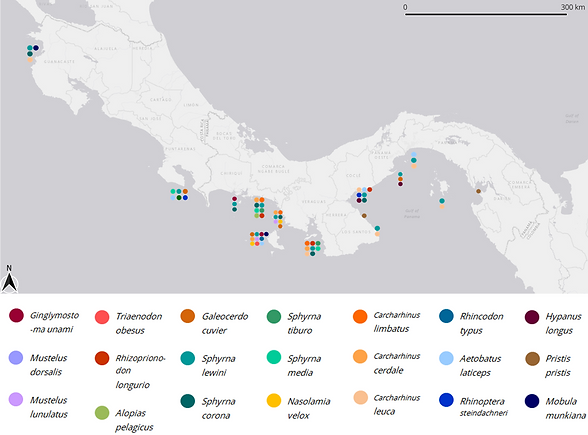Viviane G. Ali
Msc. in Genetics
Personal website

Preliminary Results
coral and elasmobranch diversity of Panama

The Pocillopora species complex conundrum
mithocondrial ORF gene marker was sequenced to taxonomically identify a representative set of Pocillopora spp. colonies inhabiting the Panama TEP reefs. Two mithocondrial lineages were identified (agreeing with published data by Pinzón et al. 2013, Schmidt-Roach et al. 2014 and updates by Johnston et al. 2017).




Benthic Composition
Clear differences could be seen when comparing the benthonic composition of coral reefs between Panama continental islands and Costa rica's pelagic Coco island. As well as a substantial difference between completness among sampled locations.
Taxonomic composition obtained from Panama continental islands and oceanic Coco island reflects biogeographical patterns already described for this regions through conventional visual surveys, and highlights the dominance of less obvious cryptobiome diversity in these reefs.

Novel PCR assay for Pocillopora spp. of the Panama TEP
Specific novel primers for a highly variable fragment of the mitochondrial ORF, (the standard marker gene for the taxonomic identification of Pocillopora spp.) were design and tested. Results corresponded with barcoding results and identify two Pocillopora clades in the Panama TEP.
Additionally, the environmental DNA approach with this primers generated a first sketch of the distribution of these species in panamanian pacific coral reefs.


Fishermen as wisemans of the sea
A first distribution map could be drawn following the empirical knowledge of the communities dedicated to artisanal fishing, that help during the first sampling season.
The leaders of these communities feel genuine concern for the future of their coasts and the resources they rely on.
The narratives of this men showed us a rich community of species that, they tell, used the estuaries and coasts as nursury areas.
Adult females give birth to their offspring in these coasts and their youngs seize these areas as training fields for hunting their prey and by growing safely, far away from other adults and challenging oceanic conditions.